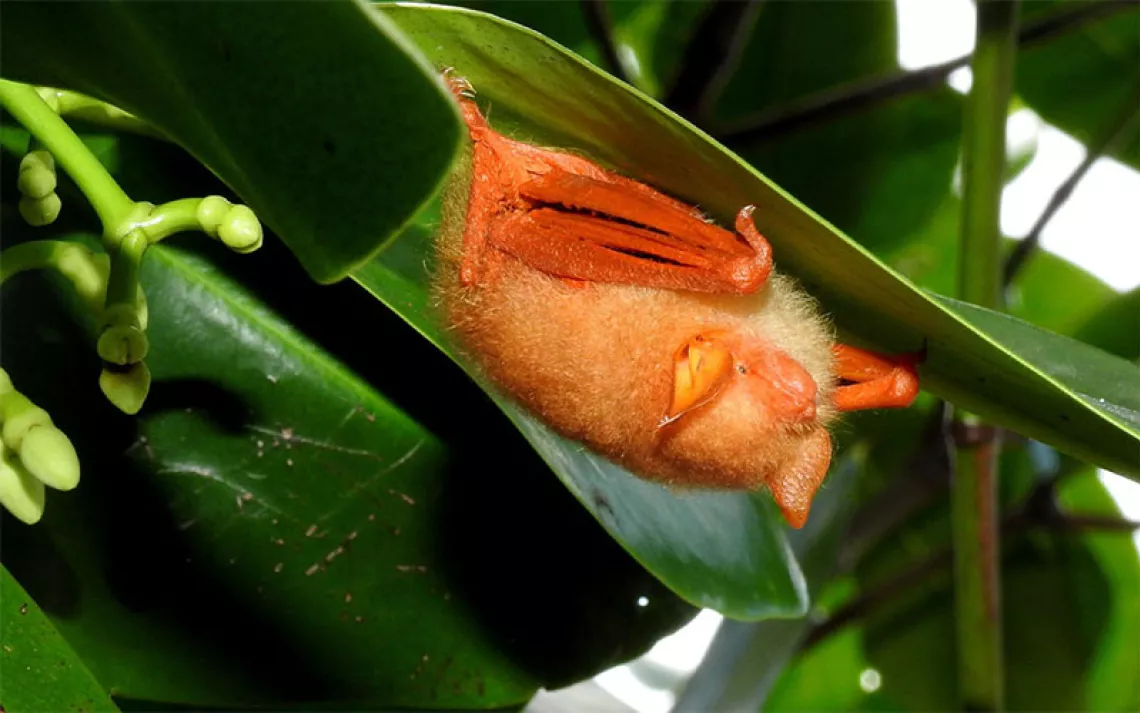Study Shows Western Monarchs Have Dropped 97% in 35 Years
Data indicates western subspecies is declining faster than eastern monarch

Photo courtesy of Candace Fallon
There’s been a lot of handwringing about monarch butterflies (Danaus plexippus) in the eastern United States, where the population of the migratory insects has declined from an estimated 1 billion insects in 1996 to about 100 million last year. The charismatic orange and black butterflies are iconic in part because of their epic 2,000-plus mile journey to a single overwintering spot in Mexico’s Sierra Madre Mountains. But a new study shows that the other major population of monarchs, which live in the western United States and overwinter on the California Coast, is suffering even steeper declines than its eastern siblings.
The study, published in the journal Biological Conservation, shows that in the last 35 years, the population of western monarchs has plummeted from about 10 million living along the west coast to approximately 300,000. Even more concerning, if present trends continue, the study indicates the western population faces a 72 percent extinction probability over 20 years and an 86 percent risk over the next 50 years.
“Scientists, policy makers, and the public have been focused on the dramatic declines in the well-known eastern population, yet this study reveals that western monarchs are even more at risk of extinction,” co-author Emma Pelton, a conservation biologist with the insect conservation organization The Xerces Society says in a statement. “We will need significant conservation action to save monarch butterflies in the West.”
Cheryl Schultz, a butterfly specialist at Washington State University Vancouver and lead author of the study, says that researchers knew generally that the insects were in decline. Each year, the monarchs overwinter in pine groves along the coast from central California to Baja. In the 1990s, citizen-scientists began noticing that the number of monarchs flocking to the 300 or wintering groves were dropping. So the Xerces Society initiated a volunteer Thanksgiving monarch count in 1997. That data showed a precipitous drop in the population over the past 20 years.
But for this study the researchers looked back even further, combing historical records to find reliable data on monarch populations collected by biologists and citizen scientists. Combining that with the Xerces data, they were able to reconstruct the monarch timeline all the way back to 1981. While they expected the species to be on the wane, the actual numbers were shocking. “This is new,” says Schultz. “We were not expecting the decline to be as sharp as it was when we did the analysis. We knew they were in decline, but we did not know it was that steep."
It’s hard to pinpoint one cause for the decline; researchers believe it’s likely a combination of factors. Many overwintering sites in California have been destroyed by urban development. Land use changes have reduced the available number of wild flowers on which the insects nectar, and herbicide use has eliminated milkweed, on which the species relies to lay its eggs, from thousands of acres of agricultural land. Extended drought could be a factor, and the increasing use of novel pesticides, like neonicotinoids, may also contribute to the declines.
The research team is currently undertaking a five-year study in five western states to monitor where and when monarchs breed in the west, which is not well studied. Once they get a handle on the basic biology and life cycle of the butterfly, they can begin to determine where it is being hit the hardest.
The precipitous 97 percent population decline is enough to warrant at least threatened status under the Endangered Species Act, the authors believe. But Schultz says the new data and daunting challenge of recovering it is not a reason to give up on the butterfly. “I like to emphasize that even though we’re clearly alarmed that the butterfly is declining as fast as it is, we now have the information and the potential to help them recover.”
She points to work she did in Oregon to recover the Fender’s Blue Butterfly, which had dropped to just 2,000 insects. Working with private and public landowners as well as nonprofits, they were able to protect and improve habitat to recover the species, which now has a population of 28,000. She hopes to do the same for the monarch, but on a much larger scale. “It’s not going to happen overnight, but if we give it the time and commitment to work, there all types of amazing things we can do with the butterfly to see it recover.”
 The Magazine of The Sierra Club
The Magazine of The Sierra Club



